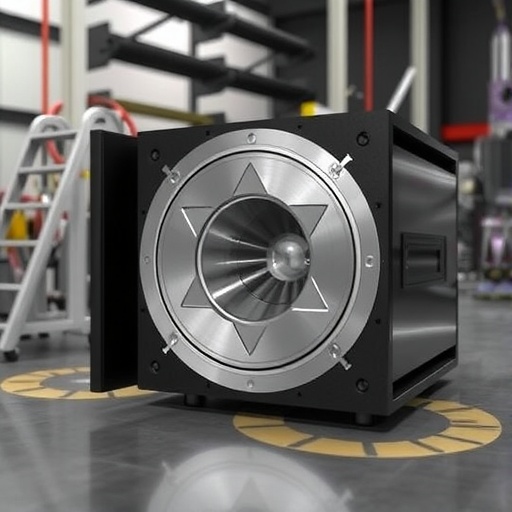A pioneering initiative at the University of Illinois Urbana-Champaign’s Grainger College of Engineering is set to transform our understanding of superconducting qubits, the fundamental building blocks of some of the world’s most promising quantum computers. Spearheaded by physics professor Angela Kou, this four-year research endeavor, supported by a $4.8 million award from the Air Force Office of Scientific Research (AFOSR), aims to decipher the elusive origins of defects known as two-level systems (TLS) that hinder qubit performance.
Quantum computing, long heralded as the next frontier in technological evolution, relies on qubits—quantum bits—that exploit the peculiar properties of quantum mechanics to perform calculations far beyond the reach of classical computers. Among the various qubit platforms, superconducting circuits have attracted considerable attention due to their scalability, compatibility with modern fabrication methods, and operational speed. Giants like Google, IBM, and Rigetti have invested heavily in this technology, seeking to harness its potential to revolutionize fields ranging from cryptography to materials science.
Yet, despite impressive advancements, superconducting qubits confront a formidable obstacle: uncontrolled quantum defects embedded within the device components. These defects manifest as TLS, quantum systems that possess two energy states and reside unwittingly within the qubit’s materials. Because TLS exist at similar energy scales as the qubits themselves, they can couple with the qubits, siphoning off quantum information and drastically impairing the coherence times essential for reliable computation.
What makes TLS particularly vexing is the profound uncertainty surrounding their origins. Unlike typical defects in conventional electronics—often traceable to material impurities or processing errors—TLS have eluded precise identification for decades. Their erratic presence and complex interaction within superconducting devices resist straightforward explanations, presenting a critical knowledge gap that impedes the development of more robust quantum hardware.
The Illinois team’s approach is distinguished by its multidisciplinary synergy. Bringing together experts from three departments—Physics, Materials Science and Engineering, and Electrical and Computer Engineering—researchers will deploy a holistic suite of cutting-edge techniques to tackle the TLS enigma. This cross-pollination of methods promises insights unattainable through isolated investigations, capitalizing on the unique expertise available within the Grainger College ecosystem.
At the heart of this collaboration is Minjoo Lawrence Lee’s group, renowned for their mastery of molecular beam epitaxy (MBE). By assembling superconducting qubit devices atom by atom, MBE empowers unprecedented control over material structures and interfaces, permitting systematic exploration of how variances in device fabrication correlate with TLS emergence. This atomic-scale precision is vital for engineering qubits with fewer imperfections.
Complementing this, Pinshane Huang’s expertise in transmission electron microscopy (TEM) will allow real-time visualization of individual atom behaviors in fabricated qubit devices. Observing atomic arrangements and movements provides direct evidence of structural anomalies that could seed TLS, offering a window into defect dynamics with unparalleled resolution.
Further elucidating the physical makeup, David Cahill’s team will employ thermal reflectance and conductance measurements focused on junctions and interfacial regions within the qubits. Because TLS frequently congregate at material boundaries, these thermal probes might reveal subtle variations indicating defect presence or activity, enhancing understanding of where and why TLS localize.
Professor Kou’s group will apply advanced microwave characterization to quantify energy dissipation and count the number of TLS defects linked to the qubit. Microwave signals are particularly sensitive to qubit environments, making them effective for detecting the fingerprints of TLS interference and measuring how these defects degrade quantum coherence.
Physics professor Wolfgang Pfaff will bring a complementary perspective by directly probing the energy spectra and temporal dynamics of the superconducting devices. His precise measurements aim to unravel how TLS fluctuate and interact over time with qubit states, shedding light on the mechanisms governing defect-induced decoherence.
Crucially, theoretical insights will be integrated through André Schleife’s atomic-scale simulations. By computationally modeling potential defect structures and comparing predicted properties against experimental data, his work intends to identify candidate TLS species and validate hypotheses on their microscopic origins. This theory-experiment feedback loop is essential for confirming the nature of the defects.
This well-orchestrated interplay among growth, characterization, theory, and feedback is best described as an iterative cycle – “grow, measure, simulate, refine, and repeat.” The interdisciplinary team anticipates that by executing multiple iterations, they will converge on reliable recipes to minimize TLS formation, thereby enabling the next generation of superconducting quantum processors with dramatically enhanced coherence and stability.
Professor Kou highlights the distinctive advantage of the Illinois Grainger Engineering environment: close proximity of diverse experts and prior collaborative experiences foster a collegial atmosphere where ideas and measurement modalities can merge seamlessly. This integrated approach promises to deliver breakthroughs that isolated silos cannot achieve.
The scope and ambition of this project underscore the strategic significance of solving the TLS problem. Superconducting quantum hardware stands at the convergence of academic curiosity and national security, and mitigating defects directly translates into quantum machines with longer lifetimes, fewer errors, and greater computational power—hallmarks indispensable for the quantum future.
As the AFOSR and Army Research Office Laboratory of Physical Sciences co-administer this grant, the collaborative work at Illinois is poised to resonate beyond academia, catalyzing progress across the quantum ecosystem and offering a blueprint for defect engineering techniques to be adopted worldwide.
The anticipated outcomes of this research will not only enhance our scientific understanding of quantum materials but could also influence the roadmap for quantum processor design, elevating superconducting qubits from promising curiosities to dependable engines driving transformative innovations.
Subject of Research: Origins of two-level system (TLS) defects in superconducting qubits for quantum computing.
Article Title: Not provided.
News Publication Date: Not provided.
Web References: Not provided.
References: Not provided.
Image Credits: Not provided.
Keywords: Quantum computing, superconducting qubits, two-level system defects, molecular beam epitaxy, transmission electron microscopy, microwave characterization, atomic-scale simulation, quantum hardware, quantum coherence.




